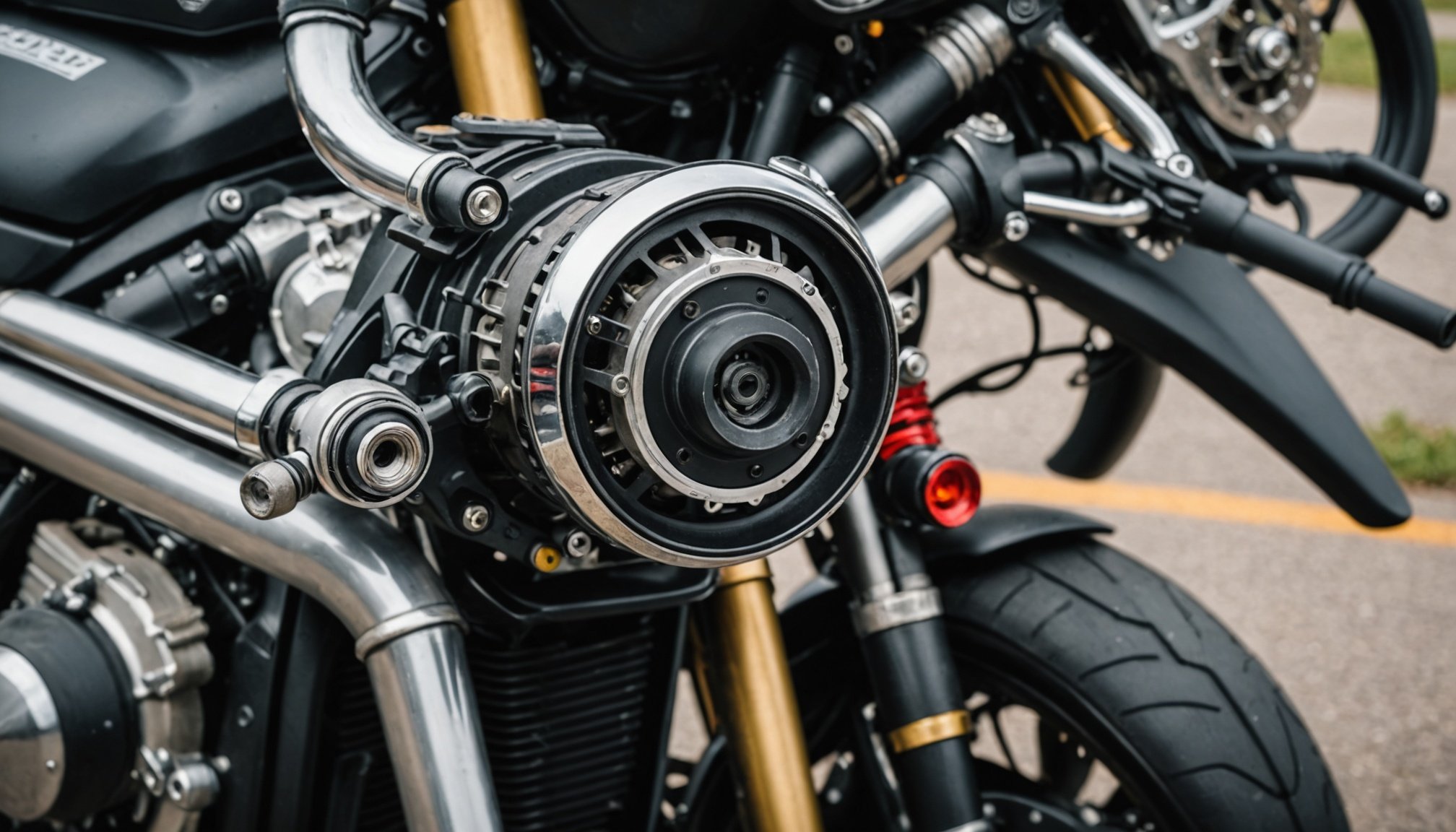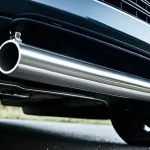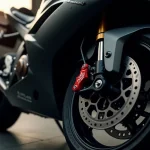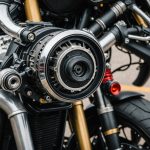Overview of Air Temperature Sensor Replacement for Triumph Street Triple
Replacing the air temperature sensor on a Triumph Street Triple is vital for maintaining optimum engine performance. This sensor measures the ambient air temperature, allowing the engine control unit (ECU) to adjust fuel injection and ignition timing accurately. A faulty sensor can cause poor fuel economy, rough idling, and reduced power output—common issues noticed during routine Triumph Street Triple maintenance.
Signs indicating the need for air temperature sensor replacement include inconsistent engine temperature readings, erratic acceleration, and triggering of the check engine light. Recognizing these symptoms early helps prevent further engine complications.
Have you seen this : Unlock the full potential of your kawasaki zx-10r’s abs: 10 essential tips for peak performance
This step-by-step guide assumes basic mechanical knowledge and familiarity with motorcycle components. Typically, the replacement takes about 30 to 45 minutes using standard tools. Accessing the sensor may require removing parts around the airbox. Patience and attention to detail during Triumph Street Triple maintenance ensure accurate installation.
By understanding the sensor’s role and recognizing warning signs, riders can confidently undertake air temperature sensor replacement, enhancing their bike’s reliability and performance.
In parallel : Ultimate guide to installing aftermarket fog lights on your yamaha tracer 900: expert insights and techniques
Required Tools, Parts, and Preparations
Before replacing the air temperature sensor on a Triumph Street Triple, gathering the right tools is crucial. Essential tools include a socket wrench set, a screwdriver (usually Phillips or flathead depending on model), and a multimeter for diagnostic testing. Additionally, having anti-seize lubricant can prevent future sensor issues.
Identifying the correct air temperature sensor parts depends on your Street Triple generation. Models from 2007 to 2012 differ slightly in sensor specifications compared to those from 2013 onward. Checking the bike’s manual or parts catalogue ensures you select the exact sensor compatible with your bike’s year and model.
Preparation is key for a smooth replacement process. Start by parking the motorcycle on a stable surface with the engine off and cool to avoid injury. Disconnect the battery to prevent any electrical short circuits during sensor removal. Clearing the workspace of clutter and organizing your tools enhances efficiency, reducing the chance of errors.
Following these preparatory steps and assembling the required tools and correct sensor parts ensures a safe, effective air temperature sensor replacement on your Triumph Street Triple.
Step-by-Step Replacement Process
Replacing the air temperature sensor on a Triumph Street Triple requires following precise, step-by-step instructions to ensure success. First, identify the air temperature sensor location; on the 675 and 765 models, it is typically situated near the intake manifold, often under the fuel tank or behind the radiator shroud. Gaining proper access involves removing panels or the fuel tank carefully without damaging any clips or connectors.
Once access is secured, disconnect the sensor’s electrical connector. This step can be tricky due to tight spaces and fragile wiring; patience is key. Next, unscrew or gently pry out the old sensor, noting its alignment for proper reinstallation. On Triumph Street Triple models, the sensor threads vary slightly, so confirm the replacement sensor matches the original to avoid compatibility issues.
During installation, insert the new sensor into the same position, ensuring a snug fit without over-tightening, which could damage the sensor or housing. Reconnect the electrical plug firmly, then reassemble any removed parts. Testing the sensor’s functionality after installation is crucial to verify accuracy and proper integration with the bike’s systems.
Following these Triumph Street Triple DIY instructions methodically reduces error risk and ensures a smooth replacement process.
Safety Considerations and Best Practices
When performing motorcycle repair safety, especially on a Triumph Street Triple, there are essential guidelines to follow. First, always prioritize both rider and machine safety by working in a well-ventilated, clean area with proper lighting. Use gloves and safety glasses to protect yourself from debris and chemicals.
One critical best practice is adhering to the manufacturer’s torque specs. Over-tightening bolts can strip threads or damage components, while under-tightening risks parts coming loose during riding. Use a calibrated torque wrench specifically designed for motorcycles to ensure accurate application of torque values outlined in the service manual for the Street Triple.
Handle parts carefully to avoid deforming or contaminating them, which can impair performance or cause failure. Keep fasteners organized to prevent mixing with incompatible sizes, reducing errors during reassembly.
To avoid common mistakes, double-check the fitment of seals and gaskets to prevent leaks and inspect cables and hoses for wear or damage before reinstalling. Testing brakes and controls after repairs is crucial to confirm functionality.
By following these best DIY practices tailored to the Triumph Street Triple, you maximize safety and effectiveness during motorcycle repairs.
Troubleshooting and Frequently Asked Questions
When troubleshooting air temperature sensor problems on the Triumph Street Triple, precision is essential. A recurring issue owners face is lingering malfunctions after sensor replacement. Often, these arise because the sensor wasn’t calibrated or installed correctly. Be sure to verify that the sensor connector is firmly seated and free from corrosion, as poor connections can mimic sensor failure.
A common question concerns dealing with the check engine light (CEL) after replacing the air temperature sensor. The CEL may not immediately turn off because the ECU needs time to recalibrate. Performing an ECU reset by disconnecting the battery or using diagnostic tools can clear old error codes, allowing the system to register the new sensor properly.
Owners also ask about common replacement problems such as wiring damage or incorrect sensor type. Using the OEM-sanctioned sensor helps avoid compatibility issues. If symptoms persist, confirming the integrity of the wiring harness and verifying sensor specifications can save time and costs.
By focusing on correct installation and ECU management, most Triumph Street Triple air temperature sensor complications can be resolved efficiently. For more detailed guidance, exploring troubleshooting strategies and addressing FAQs ensures smoother maintenance and fewer unexpected delays.
Visual Aids and Further Resources
Enhance your understanding of the Triumph Street Triple by utilizing diagrams and photos at every stage of maintenance or repair. Visual aids can clarify complex procedures, making it easier to grasp details that textual descriptions alone might miss. For example, detailed exploded diagrams pinpoint exact part placements and assembly sequences, which are crucial when working with the motorcycle’s intricate components.
Additionally, watching a Triumph Street Triple video guide offers dynamic insights often not captured in written materials. Reputable video guides demonstrate real-time techniques, helping you visualize each action step-by-step. This can boost confidence and reduce errors, especially during tasks like brake pad replacement or chain adjustment.
Consulting owner manual references is equally vital. Owner manuals contain factory-approved specifications, maintenance schedules, and troubleshooting tips—ensuring your work aligns with manufacturer recommendations. Cross-referencing with parts catalogs helps confirm you have the correct components before beginning any repair or upgrade.
By combining diagrams, photos, trustworthy videos, and official manuals, you gain a comprehensive toolkit that streamlines maintenance and elevates your expertise with the Triumph Street Triple.




